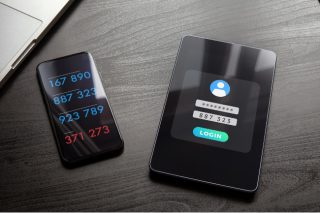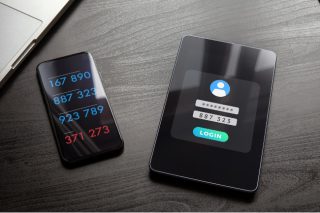

Why a great in-store mobie experience is essential
Seamless mobile connectivity is vital in the retail space as consumer expectations of connectivity in stores rises says Stuart Waine of mobile soltions .provider Spry Fox Networks
Digital transformation is impacting all industries. None more so than retail. Since Covid-19, well-known brands have overhauled their business models and embraced online trading, consumer expectations for multichannel interactions and the In-App revolution. Changing consumer behaviour patterns are driving retail digital transformation and why seamless mobile and broadband connectivity are integral to the process
The UK now has the third largest e-commerce market globally. This is predicted to reach a transaction value of over £260 billion by 2025. However, even though these new shopping trends are here to stay, brick and mortar transactions are still hugely important for retailers, More than 80 per cent of purchases still made in store according to a recent Forbes study.
Shopping malls may well be bustling once again. but retailers are having to work harder than ever to get sales, particularly the higher-value items. Interaction with third party technologies is key to the process. Moreover, modern retailing involves more than having stock, compelling deals, and guiding shoppers through different departments to the checkouts.

Staff need an effective means of replenishing stock and quickly locating best-selling items or merchants will lose out on spontaneous purchases. Central to this is the ability to communicate with colleagues and to have a hierarchical view of companywide stock levels. But, with the industry facing staff shortages. meeting consumer expectations is no mean feat.
This is where digital transformation and seamless mobile connectivity comes into their own. By embracing technologies such as warehouse picking robots, automated inventory management tools or cashier-less payments, powered by 5G and/or superfast broadband, retailers can overcome many of these pain points, thus empowering their available workforce to work smarter not harder whilst boosting productivity and profitability.
All purchases involve mobile interactions
In-store experience is as important as stock control and logistics. Shoppers are influenced by their peers and social media. More than 40 per cent of them use their phone for in store price comparisons before making that final purchase. Around 65 per cent have retail apps on their phones. There are heightened expectations for consistent interactions, uninterrupted mobile connectivity, and timely and accurate responses from staff. If consumers are obliged to leave a store to access the internet chances are they won’t come back.

Implementing a store-wide Wi-Fi network is not sufficient. Retailers have to contend with tighter consumer lending rules. All financial agreements and assessments must be undertaken online. A one-time authentication code must be generated. The intention is to offer fairness to consumers whilst reducing risks of fraud. The delivery mechanism for passcodes, however, is SMS/MMS and not Wi-Fi . This is because of the universal availability and greater security of SMS/MMS
Apart from being integral to consumer lending, seamless mobile connectivity takes centre stage in any digital transformation project because shoppers expect wow factor experiences in-store. They want to interact with technologies and be informed by compelling visual content and receive discount codes redeemable at checkout. Stores failing to deliver these experiences could lose out to those that can.
Smart technologies are becoming more prevalent
Seamless mobile coverage is a driving force behind smart building applications. It t is the trigger mechanism for device2device connectivity. Temperature control sensors, for example, are being increasingly installed to reduce energy consumption. Motion sensor allow retailers to better understand foot flow.
Ensuring seamless mobile connectivity in stores has always been challenging due to shop fit-outs, basement locations and the abundance of glass and metal which are the mobile signal blockers. The outside signal must be taken indoors using equipment such as mobile signal boosters. This has been a complex process shrouded in strict licensing regulation. There has been a relaxation in the rule and providing the level of coverage needed is no longer an arduous task as long as you tick the regulatory boxes.
Retailers have had to confront numerous challenges. The cost-of-living and energy crises are again putting the industry under pressure. The situation will get worse before it gets better. retailers need to embrace digital transformation simply to maintain the bottom line and reliable mobile coverage is central to this.
Spry Fox Networks supplies mobile coverage and network technologies to enhance commercial mobile and public safety communications.







